 Search by Keyword
|
"DON'T PASS ME BY"
(Richard Starkey)
When The Beatles began their recording career, it was completely unheard of that every member of a pop band would be songwriters. In fact, it was quite customary at the time for recording artists to release music, especially singles, written by established songwriters who had already proven themselves. Such was the case in 1962 when George Martin strongly recommended that Mitch Murray's "How Do You Do It" should be the group's first single. The Beatles argued to release a song they wrote instead. They got their way, of course, resulting in every British Beatles single released during their career being an original composition, both a-sides and b-sides.
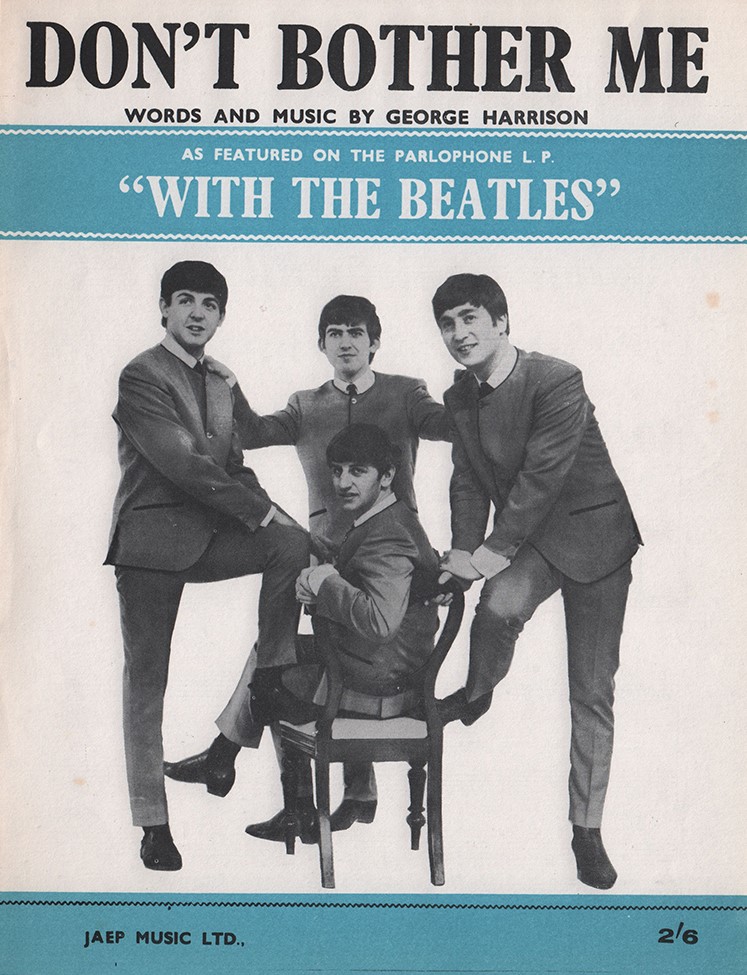 Once it was shown that the quality of their original songs were consistently above par, The Beatles earned the right to only include their own compositions on their albums as well, which meant there was room for songs by band members other than the greatly prolific John Lennon and Paul McCartney. George Harrison joined the fray before too long, his songwriting improving by leaps and bounds as he got more experience under his belt. Once it was shown that the quality of their original songs were consistently above par, The Beatles earned the right to only include their own compositions on their albums as well, which meant there was room for songs by band members other than the greatly prolific John Lennon and Paul McCartney. George Harrison joined the fray before too long, his songwriting improving by leaps and bounds as he got more experience under his belt.
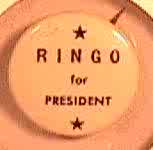 But what about Ringo Starr? His popularity was immense, especially in America where a pseudo “Ringo For President” campaign took place. But could he write songs, allowing him to join in with his other band-mates in collecting songwriting royalties? But what about Ringo Starr? His popularity was immense, especially in America where a pseudo “Ringo For President” campaign took place. But could he write songs, allowing him to join in with his other band-mates in collecting songwriting royalties?
“I used to wish that I could write songs like the others,” Ringo stated in the mid '60s. “I've tried, but I just can't. I can get the words all right, but whenever I think of a tune the others always say it sounds like such-a-thing, and when they point it out, I see what they mean.”
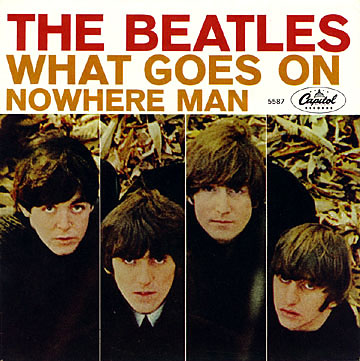 One of these early attempts did, however, eventually get recorded by The Beatles, as did another song he wrote in 1968. While Ringo received partial songwriting credits on three other Beatles songs (“What Goes On,” “Flying” and “Maggie Mae”), he ended up offering up two solo compositions for the Beatles catalog, the first being “Don't Pass Me By.” One of these early attempts did, however, eventually get recorded by The Beatles, as did another song he wrote in 1968. While Ringo received partial songwriting credits on three other Beatles songs (“What Goes On,” “Flying” and “Maggie Mae”), he ended up offering up two solo compositions for the Beatles catalog, the first being “Don't Pass Me By.”
Songwriting History
"I wrote 'Don't Pass Me By' when I was sitting 'round at home," Ringo explained in the book "Beatles Anthology." "I only play three chords on the guitar and three on the piano. I was fiddling with the piano - I just bang away - and then if a melody comes and some words, I just have to keep going. That's how it happened: I was just sitting at home alone and 'Don't Pass Me By' arrived."
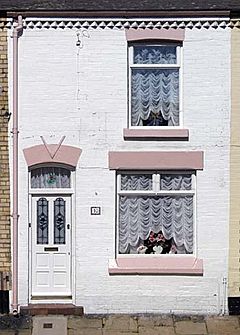 But when did this writing session occur? Ringo's first composition didn't arrive on the scene until November of 1968, but the writing took place much earlier than that. Mark Lewisohn's book “The Beatles: All These Years, Volume One – Tune In” states that Ringo premiered the song to the rest of The Beatles just after he joined the group in August of 1962. “Don't Pass Me By,” or at least some portion of it, had been written at 10 Admiral Grove in Dingle, Liverpool, where Ringo lived until 1963. But when did this writing session occur? Ringo's first composition didn't arrive on the scene until November of 1968, but the writing took place much earlier than that. Mark Lewisohn's book “The Beatles: All These Years, Volume One – Tune In” states that Ringo premiered the song to the rest of The Beatles just after he joined the group in August of 1962. “Don't Pass Me By,” or at least some portion of it, had been written at 10 Admiral Grove in Dingle, Liverpool, where Ringo lived until 1963.
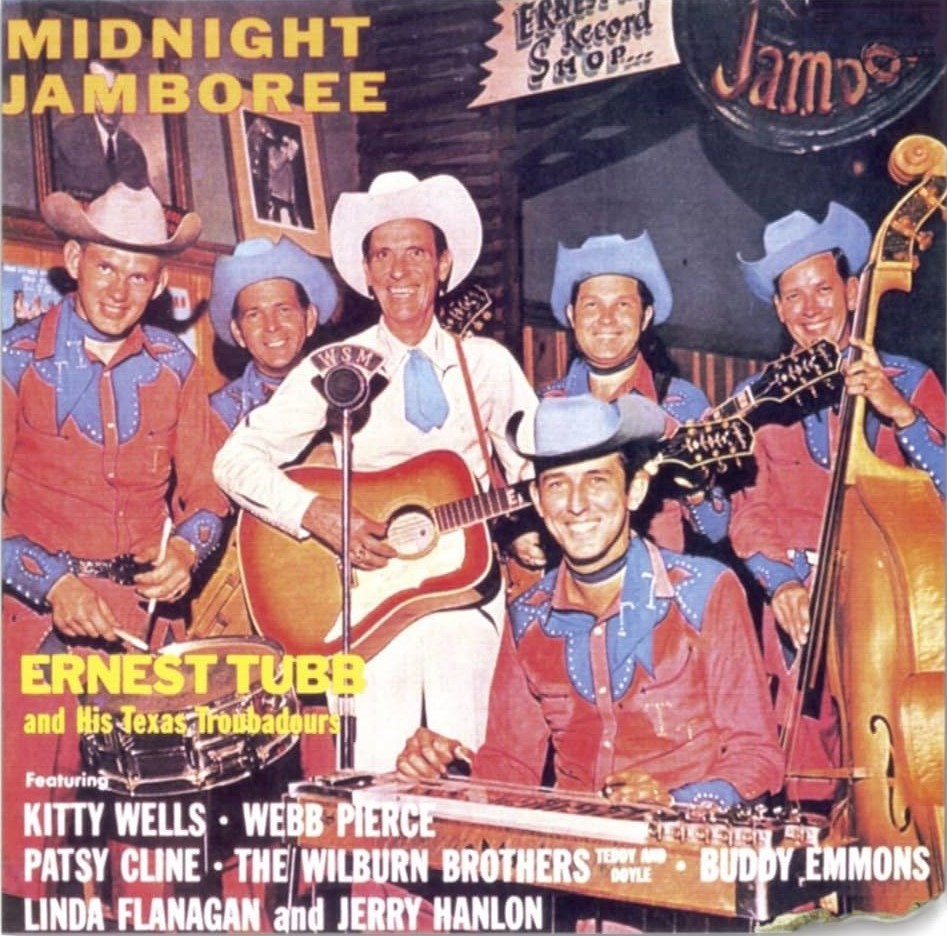 The events leading up to Ringo's inspiration for the song begin with his friend Roy Trafford. He owned an album called "Midnight Jamboree" by country star Ernest Tubb. A track on the album was "Pass Me By" sung by guest vocalist Linda Flanagan. The lyrics of the song tell of a woman who wished her former lover not to even say hello to her for fear of her heart breaking again, saying "don't you stop and make me cry." Roy Trafford learned the song and performed it at a party at Ringo's house, undoubtedly inspiring Ringo's first known foray into songwriting. The events leading up to Ringo's inspiration for the song begin with his friend Roy Trafford. He owned an album called "Midnight Jamboree" by country star Ernest Tubb. A track on the album was "Pass Me By" sung by guest vocalist Linda Flanagan. The lyrics of the song tell of a woman who wished her former lover not to even say hello to her for fear of her heart breaking again, saying "don't you stop and make me cry." Roy Trafford learned the song and performed it at a party at Ringo's house, undoubtedly inspiring Ringo's first known foray into songwriting.
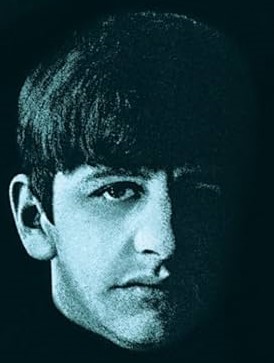 Press reports and interviews that date back to 1963 mention the song as Ringo's first composition. For instance, sometime during The Beatles seven day visit to New Zealand between June 22nd and 28th of 1964, the group did a radio interview which included mention of the song, Ringo urging his band-mates to “sing the song I've written, just for a plug.” (Paul): "Ringo has written a song called 'Don't Pass Me By.' A beautiful melody. This is Ringo's first venture into songwriting." (John and Paul sing a verse.) (Ringo): "It was written as a country and western but Paul and John singing it with that blues feeling has knocked me out. Are The Beatles going to record it? I don't know. I don't think so actually. I keep trying to push it on them every time we make a record." (Paul): Unfortunately there's never enough time to fit Ringo's song on an album. He never finishes it." Press reports and interviews that date back to 1963 mention the song as Ringo's first composition. For instance, sometime during The Beatles seven day visit to New Zealand between June 22nd and 28th of 1964, the group did a radio interview which included mention of the song, Ringo urging his band-mates to “sing the song I've written, just for a plug.” (Paul): "Ringo has written a song called 'Don't Pass Me By.' A beautiful melody. This is Ringo's first venture into songwriting." (John and Paul sing a verse.) (Ringo): "It was written as a country and western but Paul and John singing it with that blues feeling has knocked me out. Are The Beatles going to record it? I don't know. I don't think so actually. I keep trying to push it on them every time we make a record." (Paul): Unfortunately there's never enough time to fit Ringo's song on an album. He never finishes it."
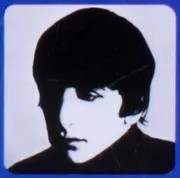 Also, during an interview segment for their July 14th, 1964 appearance on the BBC Radio show “Top Gear,” presenter Brian Matthew began this interchange with the group. (Brian): “Ringo, how about your songwriting, how's that coming on?” (Ringo): “Oh, yes, I've written a good one, you see, but no one seems to want to record it. Oh, Paul may record it.” (Paul):“No, the thing is, I was doing the tune for you to sing it.” (Ringo): No, I don't want to sing it, you sing it.” (Paul): “Don't pass me by...Don't pass me by, don't make me cry, don't make me blue, baby. 'Cause you know why?” (Ringo): “I got the ice cream for you!” (Paul): “Yeah, it's a sensational...” (Brian to Ringo): “Did you write all those words?” (Paul intercepts): “Yeah, blues and all that.” (Brian): "He's the Dylan Thomas of Liverpool, isn't he?" Also, during an interview segment for their July 14th, 1964 appearance on the BBC Radio show “Top Gear,” presenter Brian Matthew began this interchange with the group. (Brian): “Ringo, how about your songwriting, how's that coming on?” (Ringo): “Oh, yes, I've written a good one, you see, but no one seems to want to record it. Oh, Paul may record it.” (Paul):“No, the thing is, I was doing the tune for you to sing it.” (Ringo): No, I don't want to sing it, you sing it.” (Paul): “Don't pass me by...Don't pass me by, don't make me cry, don't make me blue, baby. 'Cause you know why?” (Ringo): “I got the ice cream for you!” (Paul): “Yeah, it's a sensational...” (Brian to Ringo): “Did you write all those words?” (Paul intercepts): “Yeah, blues and all that.” (Brian): "He's the Dylan Thomas of Liverpool, isn't he?"
 Ringo took along a cassette tape recorder, a relatively new development at the time, when The Beatles embarked on their brief international concert tour in June and July of 1966. Sometime during this tour (possibly early Sunday morning of July 3rd at the Hilton Hotel in Tokyo, Japan), Ringo took to recording an early version of "Don't Pass Me By" on piano. While the lyrics were still in the process of development, he sang what he had in a lower melody line than what we eventually heard on the "White Album," flubbing his piano performance on occassion, stating, "oh sorry, I went into the wrong key there, start again!" Three cassettes from this trip, including this demo of "Don't Pass Me By," was eventually sold at Omego Auctions in Newton-Le-Willows, Merseyside, England in March of 2014 for $16,000. Ringo took along a cassette tape recorder, a relatively new development at the time, when The Beatles embarked on their brief international concert tour in June and July of 1966. Sometime during this tour (possibly early Sunday morning of July 3rd at the Hilton Hotel in Tokyo, Japan), Ringo took to recording an early version of "Don't Pass Me By" on piano. While the lyrics were still in the process of development, he sang what he had in a lower melody line than what we eventually heard on the "White Album," flubbing his piano performance on occassion, stating, "oh sorry, I went into the wrong key there, start again!" Three cassettes from this trip, including this demo of "Don't Pass Me By," was eventually sold at Omego Auctions in Newton-Le-Willows, Merseyside, England in March of 2014 for $16,000.
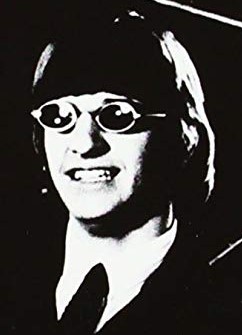 Concerning the lyrics, Ringo's early drafts contained the following verses: "I'm waiting for your footsteps / coming up the drive / I'm waiting for your footsteps / I know they'll soon arrive." "I feel a little foolish / sitting here alone / Instead of eating crackers / I think I'll just get stoned." "You came all wrapped in cellophane / with purple bursting free / The card said open carefully / and pay for C.O.D." An early lyric sheet penned by Ringo with these lyrics was featured in the book that came with the Super Deluxe "White Album" 50th Anniversary box set. Concerning the lyrics, Ringo's early drafts contained the following verses: "I'm waiting for your footsteps / coming up the drive / I'm waiting for your footsteps / I know they'll soon arrive." "I feel a little foolish / sitting here alone / Instead of eating crackers / I think I'll just get stoned." "You came all wrapped in cellophane / with purple bursting free / The card said open carefully / and pay for C.O.D." An early lyric sheet penned by Ringo with these lyrics was featured in the book that came with the Super Deluxe "White Album" 50th Anniversary box set.
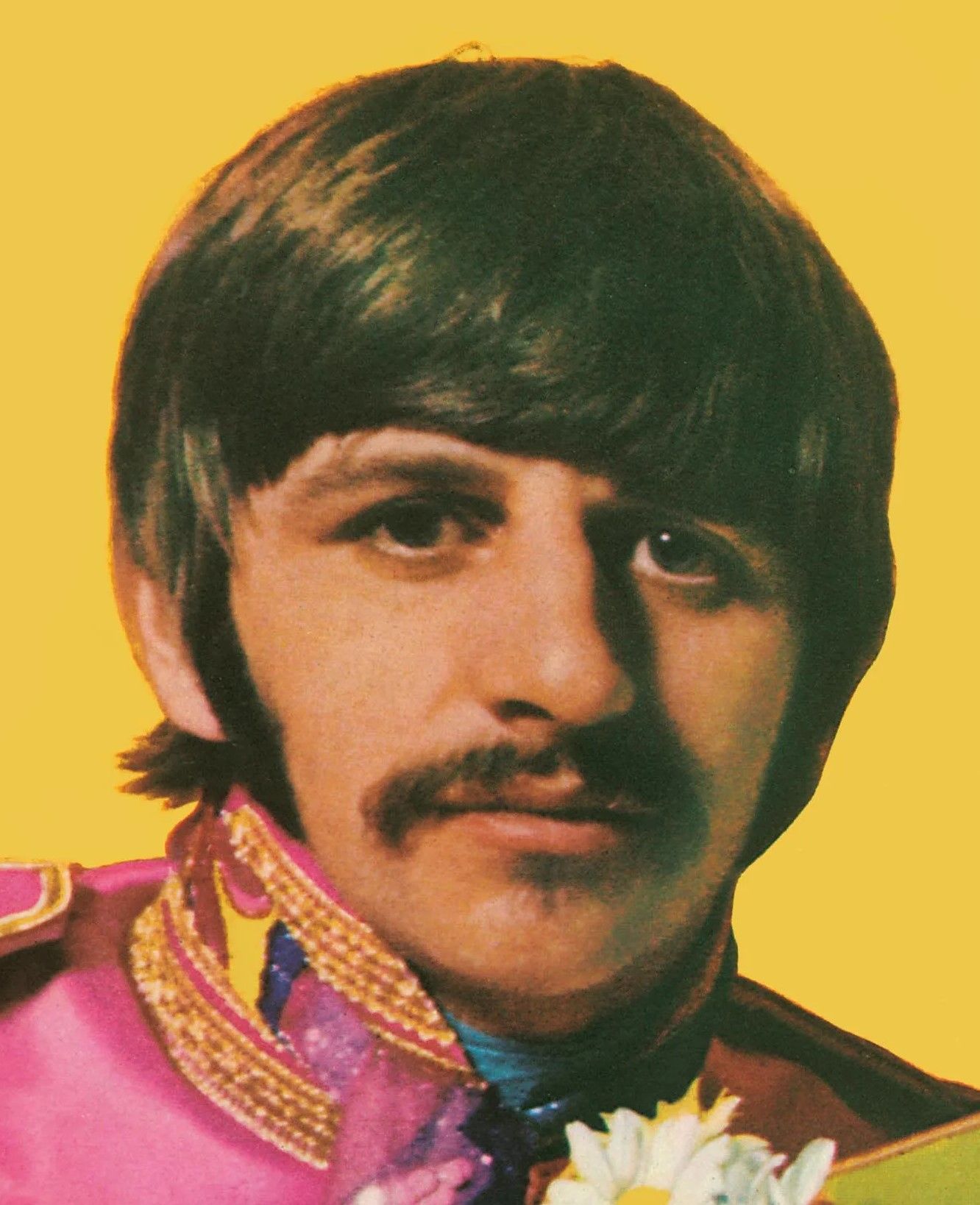 As of December, 1967, Ringo seemed downcast about The Beatles not recording his song and as to his abilities as a songwriter in general. When asked in interview about any aspirations for writing music, he didn't even mention the existence of "Don't Pass Me By." "I try. I have a guitar and a piano and play a few chords, but they're all just chinga-lingas. No great tune comes out as far as I'm concerned.” As of December, 1967, Ringo seemed downcast about The Beatles not recording his song and as to his abilities as a songwriter in general. When asked in interview about any aspirations for writing music, he didn't even mention the existence of "Don't Pass Me By." "I try. I have a guitar and a piano and play a few chords, but they're all just chinga-lingas. No great tune comes out as far as I'm concerned.”
 Ringo's statement above that “no one seems to want to record it” proved to be true with regards to The Beatles. Undoubtedly by consensus of the band and George Martin, it was felt that Ringo's song didn't quite fit the bill for the direction The Beatles' music was going. This finally changed, though, in June of 1968, nearly six years after Ringo had begun composing the song. In the open-minded, free-for-all climate after their return from India in the spring of 1968, and with their need for material to fill a double-album, John, Paul and George thought to finally give Ringo his due, something he was more than pleased about. It may have been against George Martin's better judgment, but he wasn't calling the shots anymore by this time. Ringo's statement above that “no one seems to want to record it” proved to be true with regards to The Beatles. Undoubtedly by consensus of the band and George Martin, it was felt that Ringo's song didn't quite fit the bill for the direction The Beatles' music was going. This finally changed, though, in June of 1968, nearly six years after Ringo had begun composing the song. In the open-minded, free-for-all climate after their return from India in the spring of 1968, and with their need for material to fill a double-album, John, Paul and George thought to finally give Ringo his due, something he was more than pleased about. It may have been against George Martin's better judgment, but he wasn't calling the shots anymore by this time.
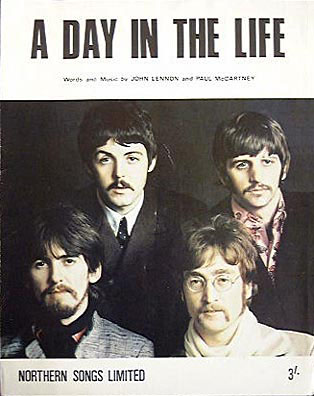 Lyrically, "Don't Pass Me By" tells of a man who is waiting for his girl to arrive at his home and is fearful that he's being stood up. One odd line that sticks out like a sore thumb is "You were in a car crash and you lost your hair." Some have speculated that this is a reference to Paul's "When I'm Sixty-Four" where the singer tells of a future time when he will be "older, losing my hair." Conspirators of the "Paul Is Dead" hoax pair Ringo's lyric to John's lyric "He blew his mind out in a car" from "A Day In The Life," both lines thought to indicate Paul's demise in 1966. McCartney fans will be happy to know, however, that the phrase 'to lose one's hair' is a common English phrase meaning "to become anxious or upset." So the woman who was late to Ringo's house was simply upset about being in an automobile accident and apparently phoned him to say she "would be late, about an hour or two." Ringo, being relieved, then responds, "That's alright" and waits patiently for her arrival. No conspiracies here! Lyrically, "Don't Pass Me By" tells of a man who is waiting for his girl to arrive at his home and is fearful that he's being stood up. One odd line that sticks out like a sore thumb is "You were in a car crash and you lost your hair." Some have speculated that this is a reference to Paul's "When I'm Sixty-Four" where the singer tells of a future time when he will be "older, losing my hair." Conspirators of the "Paul Is Dead" hoax pair Ringo's lyric to John's lyric "He blew his mind out in a car" from "A Day In The Life," both lines thought to indicate Paul's demise in 1966. McCartney fans will be happy to know, however, that the phrase 'to lose one's hair' is a common English phrase meaning "to become anxious or upset." So the woman who was late to Ringo's house was simply upset about being in an automobile accident and apparently phoned him to say she "would be late, about an hour or two." Ringo, being relieved, then responds, "That's alright" and waits patiently for her arrival. No conspiracies here!
No one can say when the composing of "Don't Pass Me By" was actually completed, but we can say for sure it was fully composed by June 6th, 1968, the day Ringo recorded his vocal tracks in EMI Studios.
Recording History
"This was my first song. It was really exciting to get it down. Everyone really worked to the full." So stated Ringo about "Don't Pass Me By," this appearing as the second song recorded for what became the "White Album," the first being John's "Revolution" (soon to be re-titled "Revolution 1"). The Beatles entered EMI Studio Three on June 5th, 1968, at approximately 2:30 pm for work on Ringo's first composition.
 Choosing to record this song was quite a shock to the EMI staff, as outlined by engineer Geoff Emerick in his book “Here, There And Everywhere.” “The 'White Album' sessions were full of surprises for me. Usually, a Beatles album project would begin with the recording of one of John's songs, and this was no exception. But the second song was always one of Paul's – after all, they were the main songwriters in the band. Ringo would be allocated one song per album, and it was usually done almost as an afterthought, near the end...But this time around, they decided to do Ringo's song right away...and, even more surprisingly, it was actually a song he'd written.” Choosing to record this song was quite a shock to the EMI staff, as outlined by engineer Geoff Emerick in his book “Here, There And Everywhere.” “The 'White Album' sessions were full of surprises for me. Usually, a Beatles album project would begin with the recording of one of John's songs, and this was no exception. But the second song was always one of Paul's – after all, they were the main songwriters in the band. Ringo would be allocated one song per album, and it was usually done almost as an afterthought, near the end...But this time around, they decided to do Ringo's song right away...and, even more surprisingly, it was actually a song he'd written.”
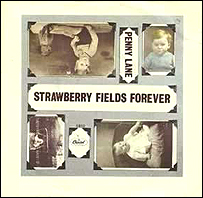 Geoff Emerick continues: “No explanation was given, and George Martin and I were flabbergasted. The only thing we could come up with was that, behind the scenes, the others must have known that Ringo was getting a bit fed up, and they were trying to keep him happy. That seemed like the only possible reason why time and energy was being expended on a Ringo song so early on...After all, the 'Pepper' sessions had begun with 'Strawberry Fields Forever' and 'Penny Lane' – a stark contrast...Obviously tensions and intrigue were already in play, right at the beginning of these sessions.” Geoff Emerick continues: “No explanation was given, and George Martin and I were flabbergasted. The only thing we could come up with was that, behind the scenes, the others must have known that Ringo was getting a bit fed up, and they were trying to keep him happy. That seemed like the only possible reason why time and energy was being expended on a Ringo song so early on...After all, the 'Pepper' sessions had begun with 'Strawberry Fields Forever' and 'Penny Lane' – a stark contrast...Obviously tensions and intrigue were already in play, right at the beginning of these sessions.”
 The song had already been known as “Don't Pass Me By” by the group, this being evidenced in the press and radio interviews as early as 1963, as indicated above. For some reason, though, documentation on this first day of recording shows the title of the song as “Ringo's Tune (Untitled).” At any rate, The Beatles, that is to say, Ringo and Paul, worked at laying down a rhythm track. John was present on this day but opted not to participate, his voice being heard on the master tape singing a bit of "You Are My Sunshine" in between takes. The rhythm track instrumentation consisted of, according to Kevin Howlett's "Track by Track" section in the book accompanying the Super Deluxe "White Album" box set, Ringo on piano and Paul on drums. The song had already been known as “Don't Pass Me By” by the group, this being evidenced in the press and radio interviews as early as 1963, as indicated above. For some reason, though, documentation on this first day of recording shows the title of the song as “Ringo's Tune (Untitled).” At any rate, The Beatles, that is to say, Ringo and Paul, worked at laying down a rhythm track. John was present on this day but opted not to participate, his voice being heard on the master tape singing a bit of "You Are My Sunshine" in between takes. The rhythm track instrumentation consisted of, according to Kevin Howlett's "Track by Track" section in the book accompanying the Super Deluxe "White Album" box set, Ringo on piano and Paul on drums.
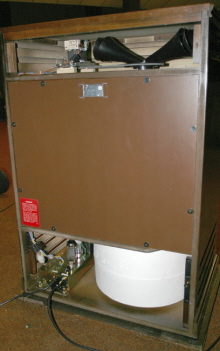 Ringo's piano, according to Bruce Spizer's book “The Beatles On Apple Records,” was “miked through a guitar amplifier and Leslie speaker,” thus creating the odd swirling effect heard on the finished recording. Upon listening to the finished recording, it appears that the drums were also recorded in the same manner, that is, through a Leslie speaker, because of its altered appearance. Three instrumental takes were recorded, the third one ending with Paul commenting, "I think that's got it," followed by Ringo shouting to George Martin in the control room, “I think we've got something there, George!” "Take three," indeed, was the keeper, the song at this point including a repeat of the first verse before the final chorus appeared. Ringo's piano, according to Bruce Spizer's book “The Beatles On Apple Records,” was “miked through a guitar amplifier and Leslie speaker,” thus creating the odd swirling effect heard on the finished recording. Upon listening to the finished recording, it appears that the drums were also recorded in the same manner, that is, through a Leslie speaker, because of its altered appearance. Three instrumental takes were recorded, the third one ending with Paul commenting, "I think that's got it," followed by Ringo shouting to George Martin in the control room, “I think we've got something there, George!” "Take three," indeed, was the keeper, the song at this point including a repeat of the first verse before the final chorus appeared.
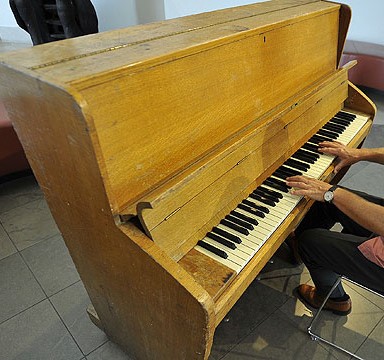 Onto "take three" was recorded overdubs to fill up the four-track tape, Ringo on another Challen piano performance and Paul playing a sleigh-bell found in EMI Studio's sound effects cupboard. Kevin Howlett's "Track By Track" describes what occured next: "An unnumbered take combined the piano and drums on track one while Ringo sang a lead vocal on track four." A second drum track is evident on the song, so this description undoubtedly refers to Paul playing the awkward drum fills heard on the finished recording and even more clearly on the compilation album "Anthology 3." Kevin Howlett's description also infers that Ringo played an additional piano part which was recorded simultaneously on track four of the four-track tape. Onto "take three" was recorded overdubs to fill up the four-track tape, Ringo on another Challen piano performance and Paul playing a sleigh-bell found in EMI Studio's sound effects cupboard. Kevin Howlett's "Track By Track" describes what occured next: "An unnumbered take combined the piano and drums on track one while Ringo sang a lead vocal on track four." A second drum track is evident on the song, so this description undoubtedly refers to Paul playing the awkward drum fills heard on the finished recording and even more clearly on the compilation album "Anthology 3." Kevin Howlett's description also infers that Ringo played an additional piano part which was recorded simultaneously on track four of the four-track tape.
 Two attempts at a reduction mix were then made, numbered "take four" and "take five." "Take four" "kept the piano and drums separate on tracks one and two," says Kevin Howlett, but this apparently wasn't deemed suitable. "Take five" was the keeper, onto which Ringo recorded his lead vocal, which was recorded at 46 cycles per second to allow it to be heard at a more youthful pitch when played back. However, this was not viewed as acceptable and "was immediately wiped and replaced by a bass guitar overdub played by Paul," Mark Lewisohn writes in "The Beatles Recording Sessions." Before the session was complete for the day, Paul recorded yet another bass part on the remaining open track of the tape. Since the four-track tape was full yet again, another reduction mix was made, "take six," but it was "noted on the recording sheet that this reduction was not good and would be bettered before recording of the song was resumed," Mark Lewisohn stipulates in "The Beatles Recording Sessions." This session ended at this point, it being now 1:30 am the following morning. Two attempts at a reduction mix were then made, numbered "take four" and "take five." "Take four" "kept the piano and drums separate on tracks one and two," says Kevin Howlett, but this apparently wasn't deemed suitable. "Take five" was the keeper, onto which Ringo recorded his lead vocal, which was recorded at 46 cycles per second to allow it to be heard at a more youthful pitch when played back. However, this was not viewed as acceptable and "was immediately wiped and replaced by a bass guitar overdub played by Paul," Mark Lewisohn writes in "The Beatles Recording Sessions." Before the session was complete for the day, Paul recorded yet another bass part on the remaining open track of the tape. Since the four-track tape was full yet again, another reduction mix was made, "take six," but it was "noted on the recording sheet that this reduction was not good and would be bettered before recording of the song was resumed," Mark Lewisohn stipulates in "The Beatles Recording Sessions." This session ended at this point, it being now 1:30 am the following morning.
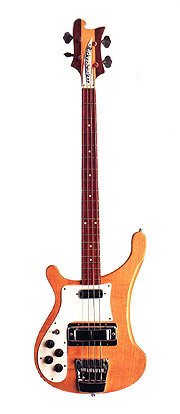 The following day (actually later that day), June 6th, 1968, The Beatles resumed work on the song at around 2:30 pm, this time in EMI Studio Two. Going back now to "take five," it was decided to scrap both bass parts that Paul had recorded at the previous session, replacing both tracks with Ringo's lead vocals, double-tracking them for a thicker sound. It's interesting to note that Ringo here repeated the lyrics to the first verse in the section before the final chorus, this also being double-tracked, and then counted from one to eight just before the break in the song in order to mark out the measures, this still being heard in the released recording. The following day (actually later that day), June 6th, 1968, The Beatles resumed work on the song at around 2:30 pm, this time in EMI Studio Two. Going back now to "take five," it was decided to scrap both bass parts that Paul had recorded at the previous session, replacing both tracks with Ringo's lead vocals, double-tracking them for a thicker sound. It's interesting to note that Ringo here repeated the lyrics to the first verse in the section before the final chorus, this also being double-tracked, and then counted from one to eight just before the break in the song in order to mark out the measures, this still being heard in the released recording.
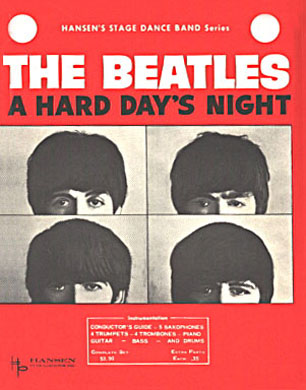 On one of the vocal tracks, Ringo finishes the choruses with an additional lyric, namely “Don't make me blue.” In his later years, when Ringo performed the song live, he would habitually include this line as if it was on the released version. Also, at the conclusion of one of the vocal tracks, he records this spoken-word ad lib: “I'm waiting for ya, honey. Hurry up to me. I don't want you to pass me by, I don't want you to make me cry, I want you to make me happy, happy, happy, 'cause that's what I want!" At this point the song ends, which prompts Ringo to state, "This is some friendly," which becomes yet another phrase viewed by the rest of The Beatles as a "Ringoism," a humourous anecdote that makes them laugh. Other "Ringoisms" include, "A Hard Day's Night" and "Tomorrow Never Knows," which they celebrated by naming popular Beatles songs after them. They liked this new phrase so much that they instructed the engineers to document the song on the recording sheet for this day as, "This Is Some Friendly." This must have been an actual consideration for a title since, during an interview two days later, The Beatles were asked about their new album and Ringo stated, “I have already recorded my song for the next LP. It has two titles, so I can't say what it will be called yet.” On one of the vocal tracks, Ringo finishes the choruses with an additional lyric, namely “Don't make me blue.” In his later years, when Ringo performed the song live, he would habitually include this line as if it was on the released version. Also, at the conclusion of one of the vocal tracks, he records this spoken-word ad lib: “I'm waiting for ya, honey. Hurry up to me. I don't want you to pass me by, I don't want you to make me cry, I want you to make me happy, happy, happy, 'cause that's what I want!" At this point the song ends, which prompts Ringo to state, "This is some friendly," which becomes yet another phrase viewed by the rest of The Beatles as a "Ringoism," a humourous anecdote that makes them laugh. Other "Ringoisms" include, "A Hard Day's Night" and "Tomorrow Never Knows," which they celebrated by naming popular Beatles songs after them. They liked this new phrase so much that they instructed the engineers to document the song on the recording sheet for this day as, "This Is Some Friendly." This must have been an actual consideration for a title since, during an interview two days later, The Beatles were asked about their new album and Ringo stated, “I have already recorded my song for the next LP. It has two titles, so I can't say what it will be called yet.”
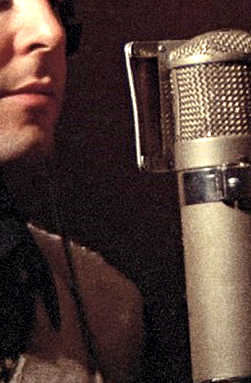 Since this filled up all four tracks again, another reduction mix was made, making this "take seven." With two tracks open again, Paul recorded his bass guitar on one of the tracks, leaving the other track open for another day. Onto one of the tracks, Paul and John repeatedly whispered "This is some friendly" at the end of the song in honor of Ringo's humorous anecdote, Ringo also heard whispering "I've seen a few Friendlies and this is one." An unnumbered rough remix was made of the song thus far, undoubtedly taken away by Paul and/or Ringo to listen to and help them decide what to fill the open track with to bring the recording to completion. Since this filled up all four tracks again, another reduction mix was made, making this "take seven." With two tracks open again, Paul recorded his bass guitar on one of the tracks, leaving the other track open for another day. Onto one of the tracks, Paul and John repeatedly whispered "This is some friendly" at the end of the song in honor of Ringo's humorous anecdote, Ringo also heard whispering "I've seen a few Friendlies and this is one." An unnumbered rough remix was made of the song thus far, undoubtedly taken away by Paul and/or Ringo to listen to and help them decide what to fill the open track with to bring the recording to completion.
 You might have noticed the conspicuous absence of both John and George in contributing to the recording of this song. Geoff Emerick explains what the other Beatles were up to on this day: “Kenny Everett, the BBC disc jockey, came into the studio and did an interview with the four Beatles while they were working on 'Don't Pass Me By.' It was a distraction, but John got into quite a jolly mood, hamming it up for the microphone, so it did help lighten the atmosphere.” During John's interview, when asked by Kenny Everett what they've recorded for the new album so far, John stated: “Well, we've just done two tracks, both unfinished, and the second one is Ringo's first song that we are working on this very moment.” (Kenny Everett): “He composed it himself?” (John): “He composed it himself in a fit of lethargy.” (Kenny Everett): “And what do you think about it?” (John): “I think it's the most wonderful thing I've ever heard since Nilsson's 'River Deep, Mountain Dew.'” You might have noticed the conspicuous absence of both John and George in contributing to the recording of this song. Geoff Emerick explains what the other Beatles were up to on this day: “Kenny Everett, the BBC disc jockey, came into the studio and did an interview with the four Beatles while they were working on 'Don't Pass Me By.' It was a distraction, but John got into quite a jolly mood, hamming it up for the microphone, so it did help lighten the atmosphere.” During John's interview, when asked by Kenny Everett what they've recorded for the new album so far, John stated: “Well, we've just done two tracks, both unfinished, and the second one is Ringo's first song that we are working on this very moment.” (Kenny Everett): “He composed it himself?” (John): “He composed it himself in a fit of lethargy.” (Kenny Everett): “And what do you think about it?” (John): “I think it's the most wonderful thing I've ever heard since Nilsson's 'River Deep, Mountain Dew.'”
At around midnight that evening, attention turned to preparing tapes to be used for John's “Revolution 9” which took the session until 2:45 am the following morning.
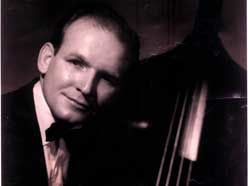 “Don't Pass Me By” sat for a little over a month before it was brought into EMI Studio Two for more work. This day was July 12th, 1968, this session beginning at 3 pm. During the previous month or so, it was decided that the last open track on the four-track tape, track two, would be filled with a country fiddle, musician Jack Fallon recording his part on this day between 3 and 6:40 pm. Coincidentally, Jack Fallon was a former booking agent who had booked The Beatles into their first professional show on March 31st, 1962, at the Subscription Rooms, George Street, in Stroud, Gloucestershire. This gig was played ten weeks before their audition with George Martin at EMI Records, so Jack Fallon brought back some fond memories when he surprisingly arrived in the studio that day. The fiddle was not his main instrument, however. He was much better known for playing bass with Duke Ellington, Hoagy Carmichael and Sarah Vaughan among others. Nonetheless, he played violin in the suitable country style needed for the song. “Don't Pass Me By” sat for a little over a month before it was brought into EMI Studio Two for more work. This day was July 12th, 1968, this session beginning at 3 pm. During the previous month or so, it was decided that the last open track on the four-track tape, track two, would be filled with a country fiddle, musician Jack Fallon recording his part on this day between 3 and 6:40 pm. Coincidentally, Jack Fallon was a former booking agent who had booked The Beatles into their first professional show on March 31st, 1962, at the Subscription Rooms, George Street, in Stroud, Gloucestershire. This gig was played ten weeks before their audition with George Martin at EMI Records, so Jack Fallon brought back some fond memories when he surprisingly arrived in the studio that day. The fiddle was not his main instrument, however. He was much better known for playing bass with Duke Ellington, Hoagy Carmichael and Sarah Vaughan among others. Nonetheless, he played violin in the suitable country style needed for the song.
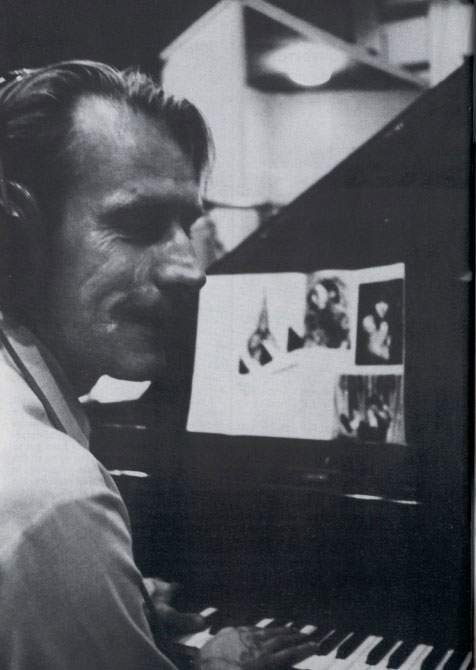 Regarding his fiddle playing on this day, Jack Fallon recalls: “George Martin had jotted down a 12-bar blues for me. A lot of country fiddle playing is double-stop but Paul and George Martin – they were doing the arranging – suggested I play it single note. So it wasn't really the country sound they originally wanted. But they seemed pleased. Ringo was around too, keeping an eye on his song.” Regarding his fiddle playing on this day, Jack Fallon recalls: “George Martin had jotted down a 12-bar blues for me. A lot of country fiddle playing is double-stop but Paul and George Martin – they were doing the arranging – suggested I play it single note. So it wasn't really the country sound they originally wanted. But they seemed pleased. Ringo was around too, keeping an eye on his song.”
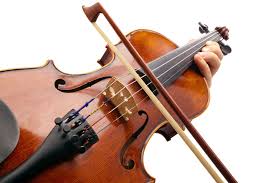 At the end of the finished recording, the listener can hear some extraneous fiddle playing which then fades away with the song (in fact, the mono and stereo versions differ in the fiddling heard). Jack Fallon explains: “I thought that they had had enough so I just busked around a bit. When I heard it played back at the end of the session I was hoping they'd scrub that bit out, but they didn't, so there I am on record, scaping away! I was very surprised they kept it in; it was pretty dreadful.” At the end of the finished recording, the listener can hear some extraneous fiddle playing which then fades away with the song (in fact, the mono and stereo versions differ in the fiddling heard). Jack Fallon explains: “I thought that they had had enough so I just busked around a bit. When I heard it played back at the end of the session I was hoping they'd scrub that bit out, but they didn't, so there I am on record, scaping away! I was very surprised they kept it in; it was pretty dreadful.”
In the book “Beatles Anthology,” Ringo fondly remembers this session. “We played it with a country attitude. It was great to get my first song down, one that I had written. It was a very exciting time for me and everyone was really helpful, and recording that crazy violist was a thrilling moment.”
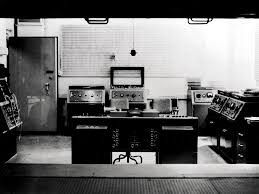 After this was complete, "The Beatles Recording Sessions" states that Paul added yet another bass overdub and Ringo contributed another piano part, apparently wiping their former performances. Four mono mixes were then made by the engineering team of George Martin, Geoff Emerick and Richard Lush in the control room of EMI Studio Two, but one further addition made later to the song deemed these mono mixes unusable. After a pair of mono mixes for “Ob-La-Di, Ob-La-Da” were made, this session ended at 11 pm. After this was complete, "The Beatles Recording Sessions" states that Paul added yet another bass overdub and Ringo contributed another piano part, apparently wiping their former performances. Four mono mixes were then made by the engineering team of George Martin, Geoff Emerick and Richard Lush in the control room of EMI Studio Two, but one further addition made later to the song deemed these mono mixes unusable. After a pair of mono mixes for “Ob-La-Di, Ob-La-Da” were made, this session ended at 11 pm.
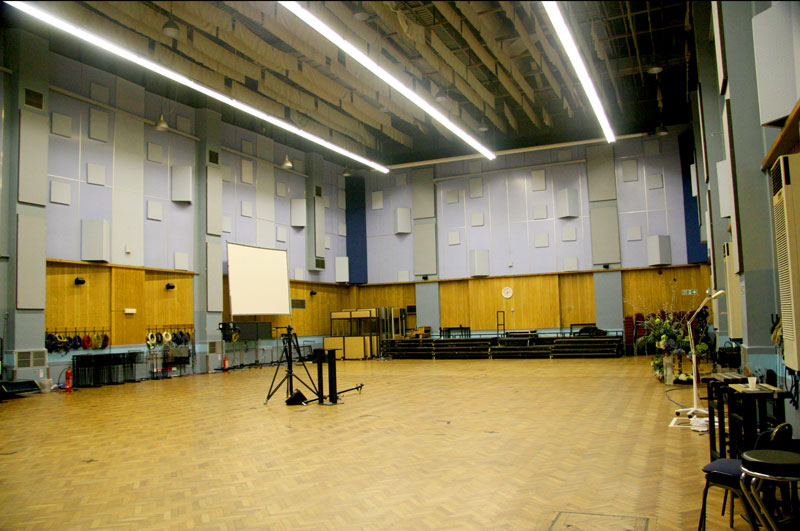 A week and a half later, on July 22nd, 1968, the final element of “Don't Pass Me By” was recorded in EMI Studio One. The larger Studio One was chosen because the orchestral work for John's “Good Night” was being recorded on this day and they needed a studio to accommodate the 26 musicians that would perform. Before that happened, however, approximately between 7 and 8 pm, a tinkling piano introduction to “Don't Pass Me By” was recorded as an edit piece, undoubtedly by Paul. Four 'takes' were recorded, also through a Leslie speaker, the fourth being deemed the best, although this was drastically cut down from 45 seconds to only eight seconds. This piano introduction would be edited onto the finished version when the proper mono and stereo mixes were prepared. A week and a half later, on July 22nd, 1968, the final element of “Don't Pass Me By” was recorded in EMI Studio One. The larger Studio One was chosen because the orchestral work for John's “Good Night” was being recorded on this day and they needed a studio to accommodate the 26 musicians that would perform. Before that happened, however, approximately between 7 and 8 pm, a tinkling piano introduction to “Don't Pass Me By” was recorded as an edit piece, undoubtedly by Paul. Four 'takes' were recorded, also through a Leslie speaker, the fourth being deemed the best, although this was drastically cut down from 45 seconds to only eight seconds. This piano introduction would be edited onto the finished version when the proper mono and stereo mixes were prepared.
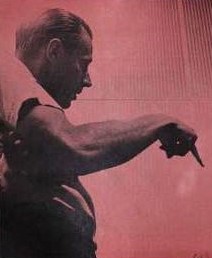 However, George Martin had another idea for an introduction to “Don't Pass Me By,” something that was also recorded on this same day. An orchestral score was arranged by George Martin and the musicians assembled on this day recorded a piece which has come to be known as “A Beginning.” While this piece was beautifully scored and performed, and would have fit in with The Beatles intention of using segues between the tracks on the album, it was decided not to use this recording after all. While a segment of a different take of this introduction was used in the film "Yellow Submarine," the full recording of this piece was used as the opening track of the 1996 compilation album “Anthology 3" as well as being included on the Super Deluxe 50th Anniversary "White Album" box set. However, George Martin had another idea for an introduction to “Don't Pass Me By,” something that was also recorded on this same day. An orchestral score was arranged by George Martin and the musicians assembled on this day recorded a piece which has come to be known as “A Beginning.” While this piece was beautifully scored and performed, and would have fit in with The Beatles intention of using segues between the tracks on the album, it was decided not to use this recording after all. While a segment of a different take of this introduction was used in the film "Yellow Submarine," the full recording of this piece was used as the opening track of the 1996 compilation album “Anthology 3" as well as being included on the Super Deluxe 50th Anniversary "White Album" box set.
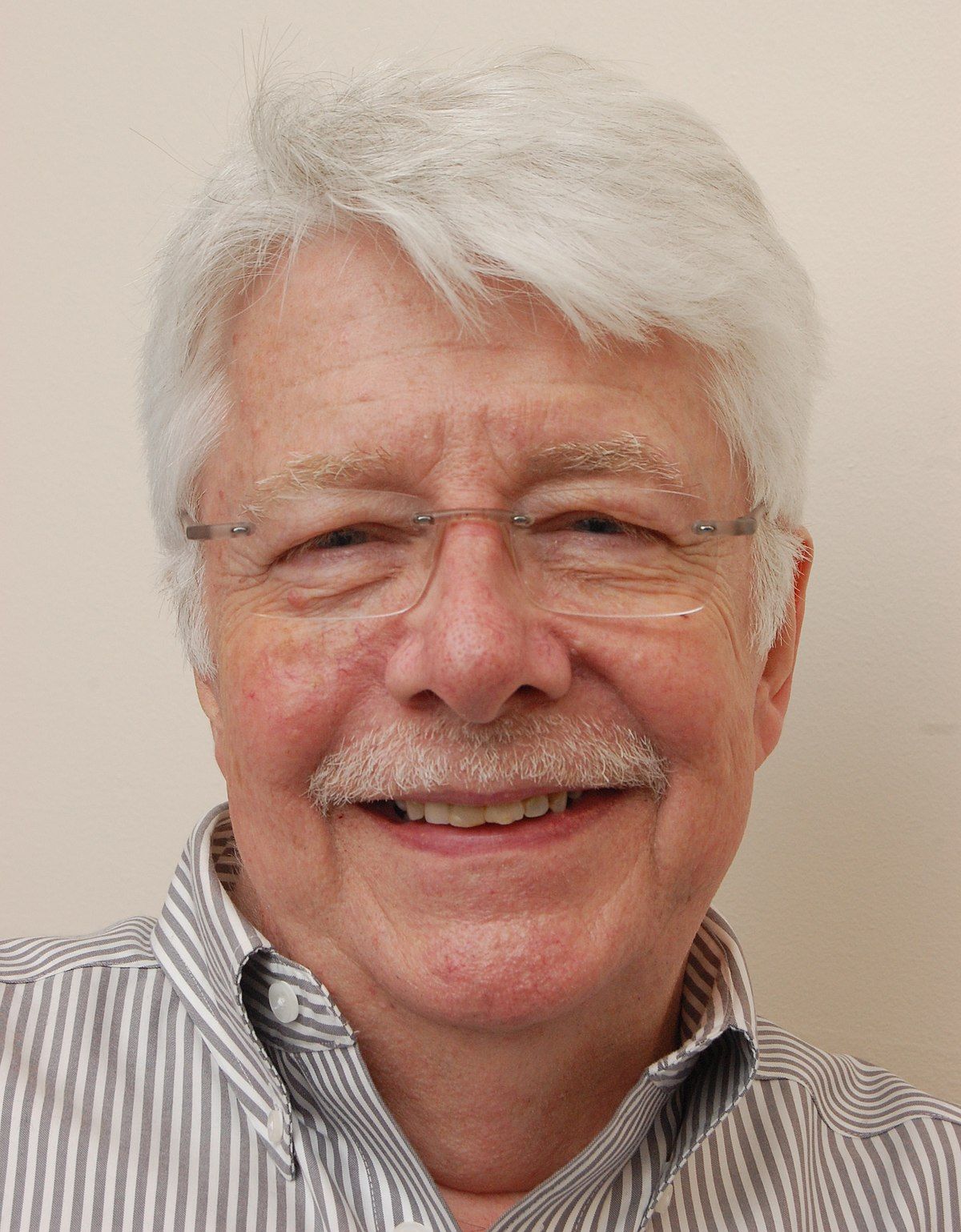 Both the mono and stereo mixes of the song were created in the control room of EMI Studio Two on October 11th, 1968 by the engineering team of George Martin, Ken Scott and John Smith. Only one mono mix and one stereo mix were needed to get the song to a releasable state, them having to tack on the piano edit pieces for each, as well as mix out the fiddle playing until the end of the first verse and edit out the repeated first verse toward the end of the song. And, as noted above, they chose a different closing segment of Jack Fallon's fiddle playing for the stereo mix, seemingly an isolated performance taken directly from one of the song's choruses. The mono version was purposely speeded up which is especially noticeable with Ringo's higher pitched vocals. There is a little more fiddle playing throughout the mono version as well. Both the mono and stereo mixes of the song were created in the control room of EMI Studio Two on October 11th, 1968 by the engineering team of George Martin, Ken Scott and John Smith. Only one mono mix and one stereo mix were needed to get the song to a releasable state, them having to tack on the piano edit pieces for each, as well as mix out the fiddle playing until the end of the first verse and edit out the repeated first verse toward the end of the song. And, as noted above, they chose a different closing segment of Jack Fallon's fiddle playing for the stereo mix, seemingly an isolated performance taken directly from one of the song's choruses. The mono version was purposely speeded up which is especially noticeable with Ringo's higher pitched vocals. There is a little more fiddle playing throughout the mono version as well.
 On October 18th, 1968, a tape copy of the mono mix of “Don't Pass Me By” was made by 2nd Engineer John Smith. The reason for this tape copy was in order to iron out master tape imperfections. On October 18th, 1968, a tape copy of the mono mix of “Don't Pass Me By” was made by 2nd Engineer John Smith. The reason for this tape copy was in order to iron out master tape imperfections.
The above mentioned new mix created for the compilation album “Anthology 3” was put together by George Martin and Geoff Emerick sometime in 1996. They worked to combine "take three" from the first generation tape with Ringo's double-tracked vocals from "take five," then editing out the middle portion of the song.
 George Martin's son Giles Martin, along with engineer Sam Okell, brought out the original master tapes yet again to create new stereo mixes of both the complete song and "take seven," both of which were contained on various editions of the 50th Anniversary releases of the "White Album." George Martin's son Giles Martin, along with engineer Sam Okell, brought out the original master tapes yet again to create new stereo mixes of both the complete song and "take seven," both of which were contained on various editions of the 50th Anniversary releases of the "White Album."
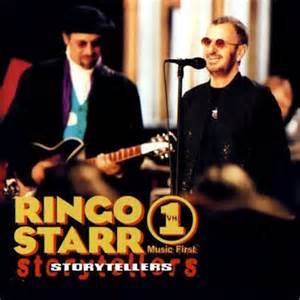 Live recordings of “Don't Pass Me By” were made by Ringo Starr and his band throughout his later years. The first was recorded May 13th, 1998 for the VH1 popular program “Storytellers,” this being featured on the album “VH1 Storytellers.” The second was recorded on July 24th, 2003 at the Casino Rama just outside Toronto, Ontario in Canada, this being featured on his album “Tour 2003.” The third was recorded on June 24th, 2005 at the Genesee Theatre in Waukegan, Illinois and broadcast on the PBS concert series “Soundstage,” this recording featured on his album “Live At Soundstage.” Live recordings of “Don't Pass Me By” were made by Ringo Starr and his band throughout his later years. The first was recorded May 13th, 1998 for the VH1 popular program “Storytellers,” this being featured on the album “VH1 Storytellers.” The second was recorded on July 24th, 2003 at the Casino Rama just outside Toronto, Ontario in Canada, this being featured on his album “Tour 2003.” The third was recorded on June 24th, 2005 at the Genesee Theatre in Waukegan, Illinois and broadcast on the PBS concert series “Soundstage,” this recording featured on his album “Live At Soundstage.”
Song Structure and Style
Being written in a "Country and Western" style, as was Ringo's favorite type of music, it follows a somwhat typical format for that genre, namely 'verse/ verse/ chorus/ verse/ chorus/ chorus' or (aababb). The loose nature of the recording is evident in the haphazard delivery and construction of the piece, Ringo and Paul sometimes getting lost during the rhythm track as to parsing out the measures properly. This results in Paul adding his drum fills in unconventional places and some unintentional time signature changes, as we'll see.
 A piano introduction of no set structure, which was recorded later and edited on, begins the song. As the final couple of piano notes are played, Paul hits a cymbal and a few drum beats, this random performance being part of his drum overdub on the first day of recording, a voice also being heard in the distant background. Paul then counts out the song with some powerful snare drum beats as we hear one track of Ringo's piano come in a little early. We then hear an official two measure introduction which acquaints us with the instrumentation we will hear throughout most of the song, this being Ringo on piano with Paul on drums and bass, added extraneous drum fills and sleigh bells filling out the musical landscape. A piano introduction of no set structure, which was recorded later and edited on, begins the song. As the final couple of piano notes are played, Paul hits a cymbal and a few drum beats, this random performance being part of his drum overdub on the first day of recording, a voice also being heard in the distant background. Paul then counts out the song with some powerful snare drum beats as we hear one track of Ringo's piano come in a little early. We then hear an official two measure introduction which acquaints us with the instrumentation we will hear throughout most of the song, this being Ringo on piano with Paul on drums and bass, added extraneous drum fills and sleigh bells filling out the musical landscape.
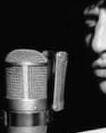 The first verse appears next, which is nine measures long and is in 4/4 time except for measure seven which has two extra beats, this becoming 6/4. Ringo's double-tracked vocals are the only new elements heard throughout measures one through seven, Jack Fallon's fiddle coming in for measures eight and nine. The added two beats in measure seven make Paul lose his grounding in the rhythm track, his drum breaks now appearing in inappropriate places in the final two measures of the first verse and continuing on into the second verse. The first verse appears next, which is nine measures long and is in 4/4 time except for measure seven which has two extra beats, this becoming 6/4. Ringo's double-tracked vocals are the only new elements heard throughout measures one through seven, Jack Fallon's fiddle coming in for measures eight and nine. The added two beats in measure seven make Paul lose his grounding in the rhythm track, his drum breaks now appearing in inappropriate places in the final two measures of the first verse and continuing on into the second verse.
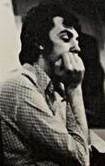 The second verse is next, which is identical to the first in number of measures, time signature changes, and elements heard with the addition of the fiddle throughout the entire verse. By the end of the fourth measure, Paul gets back on track as to where the measures are laid out, undoubtedly aided by Ringo changing chords on the piano in the proper places while they were both recording the rhythm track together. Paul does momentarily get tripped up again in this regard after the seventh measure, his next drum break appearing in the middle of the eighth measure where it shouldn't be. The second verse is next, which is identical to the first in number of measures, time signature changes, and elements heard with the addition of the fiddle throughout the entire verse. By the end of the fourth measure, Paul gets back on track as to where the measures are laid out, undoubtedly aided by Ringo changing chords on the piano in the proper places while they were both recording the rhythm track together. Paul does momentarily get tripped up again in this regard after the seventh measure, his next drum break appearing in the middle of the eighth measure where it shouldn't be.
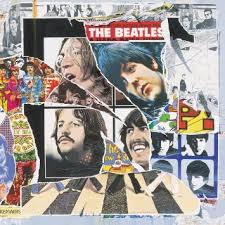 Then comes the first chorus which is twelve measures long and features the same instrumentation as the second verse. This moves directly into the third verse which is also identical instrumentally to the second verse, Paul not being confused about the seventh measure this time around. A curious rattling sound is heard in the second measure during the word “unfair,” this sound probably recorded during the fiddle overdub since it doesn't appear in the 'track three' rhythm track recording as heard on “Anthology 3.” Then comes the first chorus which is twelve measures long and features the same instrumentation as the second verse. This moves directly into the third verse which is also identical instrumentally to the second verse, Paul not being confused about the seventh measure this time around. A curious rattling sound is heard in the second measure during the word “unfair,” this sound probably recorded during the fiddle overdub since it doesn't appear in the 'track three' rhythm track recording as heard on “Anthology 3.”
The chorus that follows is the same in regards to the elements heard but differs in that it is fourteen measures long instead of twelve, the final two measures encompassing a 'Beatles break.' Measures eleven and twelve feature Ringo counting out the beats (“one, two, three...”), a crashing chord happening when Ringo says “seven” which then ushers in silence for a measure and a half.
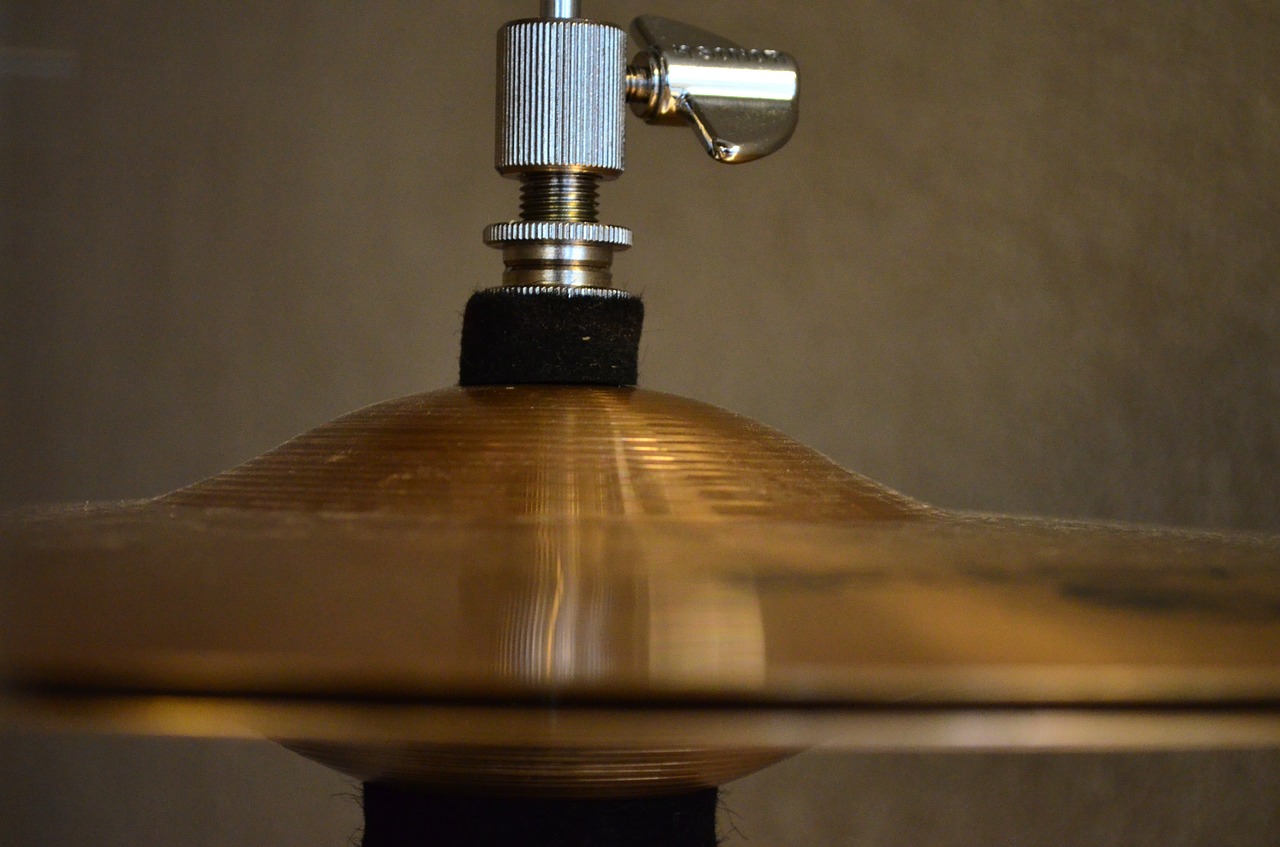 There are some unique things happening in this silence, however. We hear Ringo say “eight,” then we hear the overdubbed drum sounds winding down, then comes three staccato piano chords, then we hear the rhythm track that had been faded down being faded back up again with Paul's anticipatory hi-hat and toms flailing away, then we hear someone say something that sounds like “Give it some more,” and finally Ringo gives a quick moan. The last two beats of the fourteenth measure are filled with a loud snare drum fill to usher the song back in for a final chorus. There are some unique things happening in this silence, however. We hear Ringo say “eight,” then we hear the overdubbed drum sounds winding down, then comes three staccato piano chords, then we hear the rhythm track that had been faded down being faded back up again with Paul's anticipatory hi-hat and toms flailing away, then we hear someone say something that sounds like “Give it some more,” and finally Ringo gives a quick moan. The last two beats of the fourteenth measure are filled with a loud snare drum fill to usher the song back in for a final chorus.
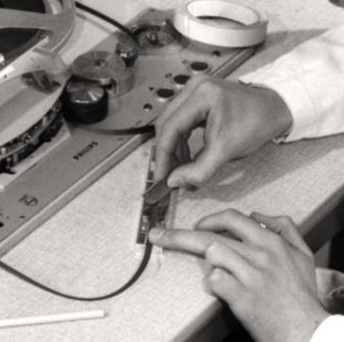 This final chorus is actually seventeen measures long this time around, this encompassing the song's conclusion. The first two measures are strictly instrumental with all the same elements as before except for the leading vocalization by Ringo of the song's title. The edit in the rhythm track can be detected as Ringo sings “Don't” at the end of the second measure, this edit being necessary to remove the repeated first verse as originally recorded. This final chorus is actually seventeen measures long this time around, this encompassing the song's conclusion. The first two measures are strictly instrumental with all the same elements as before except for the leading vocalization by Ringo of the song's title. The edit in the rhythm track can be detected as Ringo sings “Don't” at the end of the second measure, this edit being necessary to remove the repeated first verse as originally recorded.
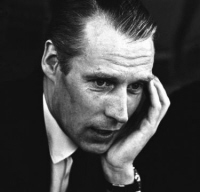 Things get complicated again because of the musicians once again getting off kilter during the rhythm track. This time it appears to be Ringo on piano that messes things up. He should have changed chords at the beginning of the fifth measure but he mistakenly waits another two beats to make this change (which can clearly be heard on the “Anthology 3” version). Ringo's vocals change where they should, however, which gets things out of whack. The same thing happens in the seventh measure, Paul compensating with his drum overdub which covers this problem nicely on the released version. All things get rectified by Ringo in the eighth measure as he pauses after the phrase “hate to see you go,” thereby making the eighth measure 6/4 instead of 4/4 and evens up the measures with Ringo's piano. Ringo was most likely prompted by someone to do this while recording his vocal tracks, probably George Martin. Things get complicated again because of the musicians once again getting off kilter during the rhythm track. This time it appears to be Ringo on piano that messes things up. He should have changed chords at the beginning of the fifth measure but he mistakenly waits another two beats to make this change (which can clearly be heard on the “Anthology 3” version). Ringo's vocals change where they should, however, which gets things out of whack. The same thing happens in the seventh measure, Paul compensating with his drum overdub which covers this problem nicely on the released version. All things get rectified by Ringo in the eighth measure as he pauses after the phrase “hate to see you go,” thereby making the eighth measure 6/4 instead of 4/4 and evens up the measures with Ringo's piano. Ringo was most likely prompted by someone to do this while recording his vocal tracks, probably George Martin.
This final chorus then concludes with a couple more chord changes and a suitable three-note ending, this being accentuated by Jack Fallon's fiddle 'scraping' while the song fades out.
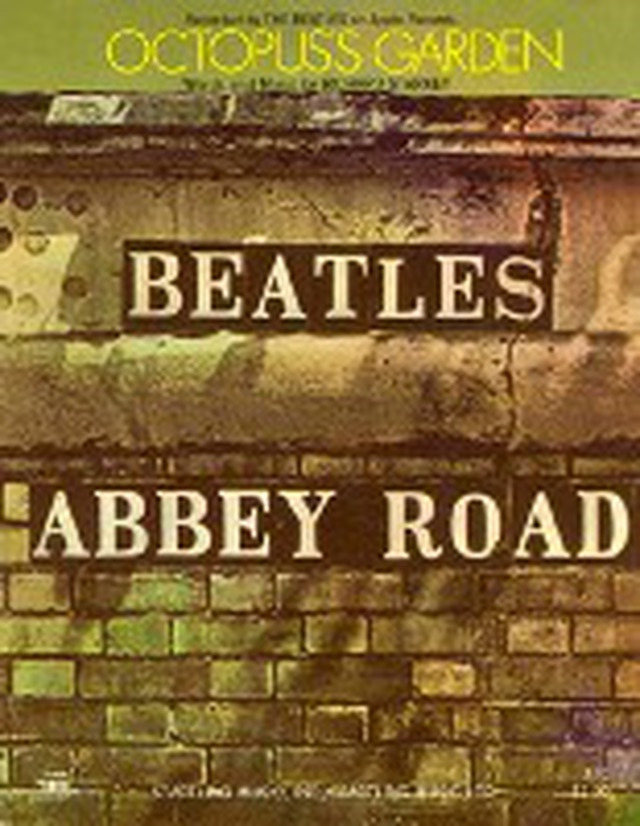 It's unfortunate to say that the effort put into “Don't Pass Me By” is sub-par in comparison to the usual Beatles productions of late. If George Harrison thought that his compositions were rushed through in the studio to get them out of the way in order to concentrate on Paul and John's songs, as he has stated, then even more so was the case for Ringo's first song. Not that Ringo wasn't grateful; in fact, as stated above, he felt that “everyone really worked to the full” on this song. Nonetheless, this situation was remedied the following year as his “Octopus's Garden” got an arrangement and production comparable to any track on the “Abbey Road” album. It's unfortunate to say that the effort put into “Don't Pass Me By” is sub-par in comparison to the usual Beatles productions of late. If George Harrison thought that his compositions were rushed through in the studio to get them out of the way in order to concentrate on Paul and John's songs, as he has stated, then even more so was the case for Ringo's first song. Not that Ringo wasn't grateful; in fact, as stated above, he felt that “everyone really worked to the full” on this song. Nonetheless, this situation was remedied the following year as his “Octopus's Garden” got an arrangement and production comparable to any track on the “Abbey Road” album.
American Releases
November 25th, 1968, was the American release date for their double-album "The Beatles," aka the "White Album," with "Don't Pass Me By" fitting in nicely on side two. The album was first released on compact disc on August 24th, 1987, then as a limited edition 30th Anniversary release on November 23rd, 1998, then as a remastered CD set on September 9th, 2009. The first mono vinyl release of the album in the US wasn't until November 9th, 2014. A vibrant new stereo mix of the album on vinyl was then released on November 9th, 2018 to commemorate its 50th Anniversary.
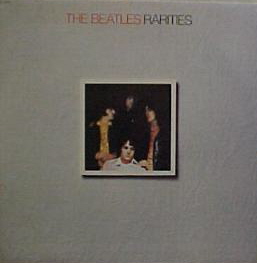 On March 24th, 1980, Capitol released a compilation album entitled “Rarities” as an answer to a British album of the same name which was being imported into the states. The majority of the tracks on the British version had been available in the US in some form so their American record label decided to formulate an album of Beatles tracks that were truly rare in the states. Since the mono version of the “White Album” had yet to be released in America, Capitol chose two tracks from the album that had significantly different sounding mono mixes, these being “Helter Skelter” and "Don't Pass Me By." On March 24th, 1980, Capitol released a compilation album entitled “Rarities” as an answer to a British album of the same name which was being imported into the states. The majority of the tracks on the British version had been available in the US in some form so their American record label decided to formulate an album of Beatles tracks that were truly rare in the states. Since the mono version of the “White Album” had yet to be released in America, Capitol chose two tracks from the album that had significantly different sounding mono mixes, these being “Helter Skelter” and "Don't Pass Me By."
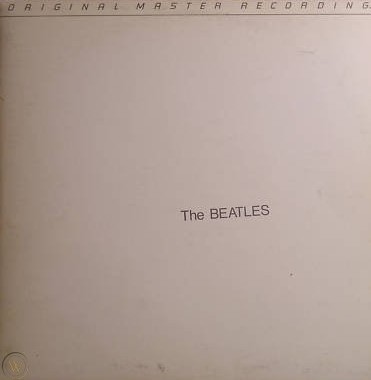 An interesting US vinyl edition of the “White Album” was released on January 7th, 1982, this being manufactured by Mobile Fidelity Sound Lab in Chatsworth, California as part of their "Original Master Recording" series. Their practice was to prepare a new master utilizing half-speed mastering technology from the original master tapes, in this case using the leased sub-master from Capitol Records. This release, which sounded superior to all previous British and American pressings, was packaged in a non-embossed unnumbered cover that did not include the usual poster/lyric sheet or individual Beatles portraits as contained in standard releases. This nonetheless excellent edition of the album was only available for a short time and is quite collectible today. An interesting US vinyl edition of the “White Album” was released on January 7th, 1982, this being manufactured by Mobile Fidelity Sound Lab in Chatsworth, California as part of their "Original Master Recording" series. Their practice was to prepare a new master utilizing half-speed mastering technology from the original master tapes, in this case using the leased sub-master from Capitol Records. This release, which sounded superior to all previous British and American pressings, was packaged in a non-embossed unnumbered cover that did not include the usual poster/lyric sheet or individual Beatles portraits as contained in standard releases. This nonetheless excellent edition of the album was only available for a short time and is quite collectible today.
 On October 28th, 1996, the compilation album "Anthology 3" was released which contained the above mentioned superimposed "take three" and "take five" from the original master tapes of "Don't Pass Me By.” This album begins with the track "A Beginning," which was originally intended as the introduction to "Don't Pass Me By" (as detailed above). On October 28th, 1996, the compilation album "Anthology 3" was released which contained the above mentioned superimposed "take three" and "take five" from the original master tapes of "Don't Pass Me By.” This album begins with the track "A Beginning," which was originally intended as the introduction to "Don't Pass Me By" (as detailed above).
The entire mono Beatles catalog was released in the US in the compact disc box set “The Beatles In Mono.” This was the first time American fans were treated to the entire “White Album” in all its mono glory. The vinyl edition of this box set was first released on September 9th, 2014.
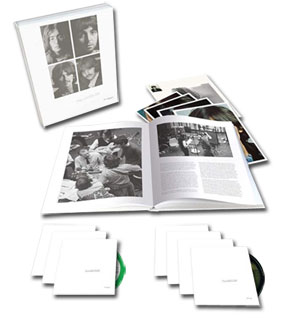 On November 9th, 2018, various editions of the "White Album" were released to commemorate its 50th Anniversary that featured two interesting versions of "Don't Pass Me By." The "Deluxe" edition, which was made available in a 3CD set and a limited edition 180-gram 4LP vinyl set, contains the newly created Giles Martin mix of the "White Album," including Ringo's song. The "Super Deluxe" 6CD + 1Blu-ray edition also contains the never-before-heard "take seven" with overdubs from the original master tape as recorded on July 12th, 1968. This is preceded on the CD by George Martin's "A Beginning," this orchestral piece sequenced this way primarily so the listener can hear what both tracks would have sounded like together if they had decided to include it on the released version of the album. On November 9th, 2018, various editions of the "White Album" were released to commemorate its 50th Anniversary that featured two interesting versions of "Don't Pass Me By." The "Deluxe" edition, which was made available in a 3CD set and a limited edition 180-gram 4LP vinyl set, contains the newly created Giles Martin mix of the "White Album," including Ringo's song. The "Super Deluxe" 6CD + 1Blu-ray edition also contains the never-before-heard "take seven" with overdubs from the original master tape as recorded on July 12th, 1968. This is preceded on the CD by George Martin's "A Beginning," this orchestral piece sequenced this way primarily so the listener can hear what both tracks would have sounded like together if they had decided to include it on the released version of the album.
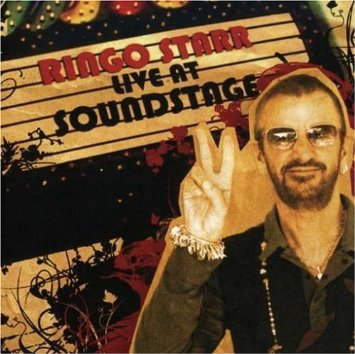 As for Ringo's live albums that feature “Don't Pass Me By,” his album “VH1 Storytellers” was released on October 20th, 1998, “Tour 2003” was released on March 23rd, 2004, and “Live At Soundstage” was released on October 23rd, 2007. The song was also included in the 2CD set "Live At The Greek Theatre 2019," which was released on November 25th, 2022, this also being released on a 2CD/Blu-Ray set that same day. As for Ringo's live albums that feature “Don't Pass Me By,” his album “VH1 Storytellers” was released on October 20th, 1998, “Tour 2003” was released on March 23rd, 2004, and “Live At Soundstage” was released on October 23rd, 2007. The song was also included in the 2CD set "Live At The Greek Theatre 2019," which was released on November 25th, 2022, this also being released on a 2CD/Blu-Ray set that same day.
Live Performances
The Beatles, of course, never performed the song live since they had stopped touring roughly two years before the song was recorded.
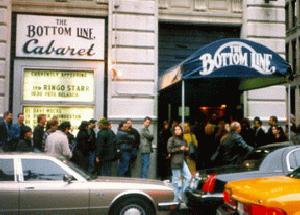 It appears that the first time Ringo ever performed “Don't Pass Me By” live was on May 12th, 1998 at The Bottom Line in New York. This was the first performance by Ringo and his newly formed band “The Roundheads.” The following day, May 13th, 1998, they were due to tape a performance for VH1's popular series “Storytellers” and Ringo played this show in New York “to get grooved up for it,” as he stated on stage that night. The song was enthusiastically received on this night as well as on the VH1 show the following day. It appears that the first time Ringo ever performed “Don't Pass Me By” live was on May 12th, 1998 at The Bottom Line in New York. This was the first performance by Ringo and his newly formed band “The Roundheads.” The following day, May 13th, 1998, they were due to tape a performance for VH1's popular series “Storytellers” and Ringo played this show in New York “to get grooved up for it,” as he stated on stage that night. The song was enthusiastically received on this night as well as on the VH1 show the following day.
 With this being the case, it is surprising that Ringo, who regularly expressed how proud he was of the song, waited until his 2003 tour to include “Don't Pass Me By” in his set lists. This 2003 tour ran from July 24th to September 7th of that year. He then resurrected the song for a one-off show on June 24th, 2005 at the Genessee Theatre in Waukegan, Illinois for a PBS “Soundstage” episode. He then held off from including the song in his set lists until his twelfth All-Starr Band tour which began on June 14th, 2012 and concluded on July 2nd, 2016. It was then included in his thirteenth All-Starr Band tour, which ran from June 2nd to September 29th, 2018, and then his fourteenth tour, which ran from March 21st to September 1st, 2019. With this being the case, it is surprising that Ringo, who regularly expressed how proud he was of the song, waited until his 2003 tour to include “Don't Pass Me By” in his set lists. This 2003 tour ran from July 24th to September 7th of that year. He then resurrected the song for a one-off show on June 24th, 2005 at the Genessee Theatre in Waukegan, Illinois for a PBS “Soundstage” episode. He then held off from including the song in his set lists until his twelfth All-Starr Band tour which began on June 14th, 2012 and concluded on July 2nd, 2016. It was then included in his thirteenth All-Starr Band tour, which ran from June 2nd to September 29th, 2018, and then his fourteenth tour, which ran from March 21st to September 1st, 2019.
Conclusion
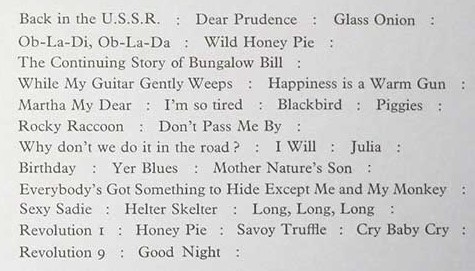 While a good percentage of Beatles fans cheer Ringo on for an actual full-on composition on a Beatles album, the song unfortunately falls into the category of ones that could have been left off, many feel. Possibly its campy style and lack of John and George's input leave most listeners feeling this was included as a favor to Ringo and is merely filler on an otherwise amazingly diverse album. While a good percentage of Beatles fans cheer Ringo on for an actual full-on composition on a Beatles album, the song unfortunately falls into the category of ones that could have been left off, many feel. Possibly its campy style and lack of John and George's input leave most listeners feeling this was included as a favor to Ringo and is merely filler on an otherwise amazingly diverse album.
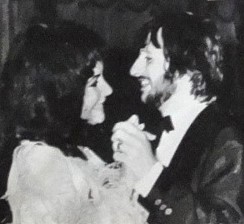 I contend, however, that the diversity on the “White Album” allows Ringo's song to work...a little light relief, if you will. The fact that “Don't Pass Me By” actually debuted in the #1 spot in Denmark in April of 1969 and remained in the Top 10 there for a month shows that this bouncy little composition did have its admirers. Here's to you, Ringo! I contend, however, that the diversity on the “White Album” allows Ringo's song to work...a little light relief, if you will. The fact that “Don't Pass Me By” actually debuted in the #1 spot in Denmark in April of 1969 and remained in the Top 10 there for a month shows that this bouncy little composition did have its admirers. Here's to you, Ringo!
Song Summary
“Don't Pass Me By”
Written by: Richard Starkey
- Song Written: 1962 to 1968
- Song Recorded: June 5 and 6, July 12 and 22, 1968
- First US Release Date: November 25, 1968
- First US Album Release: Apple #SWBO-101 “The Beatles”
- US Single Release: n/a
- Highest Chart Position: n/a
- British Album Release: Apple #PCS 7067-7068 “The Beatles”
- Length: 3:44 (mono) 3:52 (stereo)
- Key: C major
- Producer: George Martin
- Engineers: Geoff Emerick, Ken Scott, Phil McDonald, Richard Lush
Instrumentation (most likely):
- Ringo Starr - Lead Vocals, Piano (1964 Challen “Jangle Box” upright 861834)
- Paul McCartney - Drums (1964 Ludwig Super Classic Black Oyster Pearl), Bass (1964 Rickenbacker 4001 S), Piano (1905 Steinway Vertegrand). sleigh bells
- Jack Fallon - Violin
Written and compiled by Dave Rybaczewski
|
IF YOU WOULD LIKE TO MAKE A DONATION TO KEEP THIS WEBSITE UP AND RUNNING, PLEASE CLICK BELOW!
Sign Up Below for our MONTHLY BEATLES TRIVIA QUIZ!
|